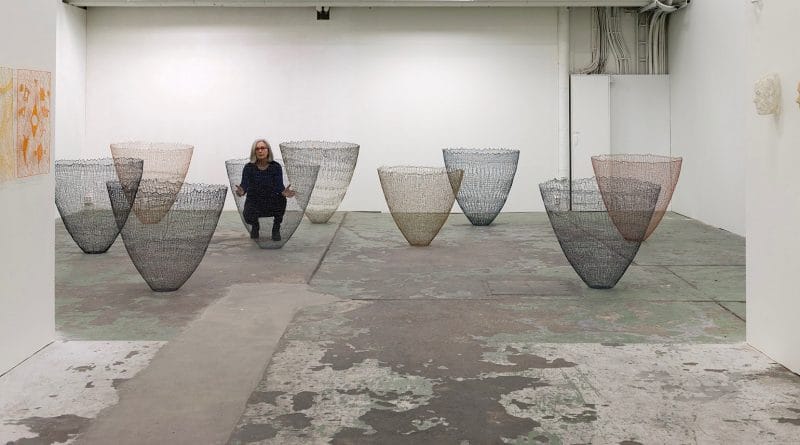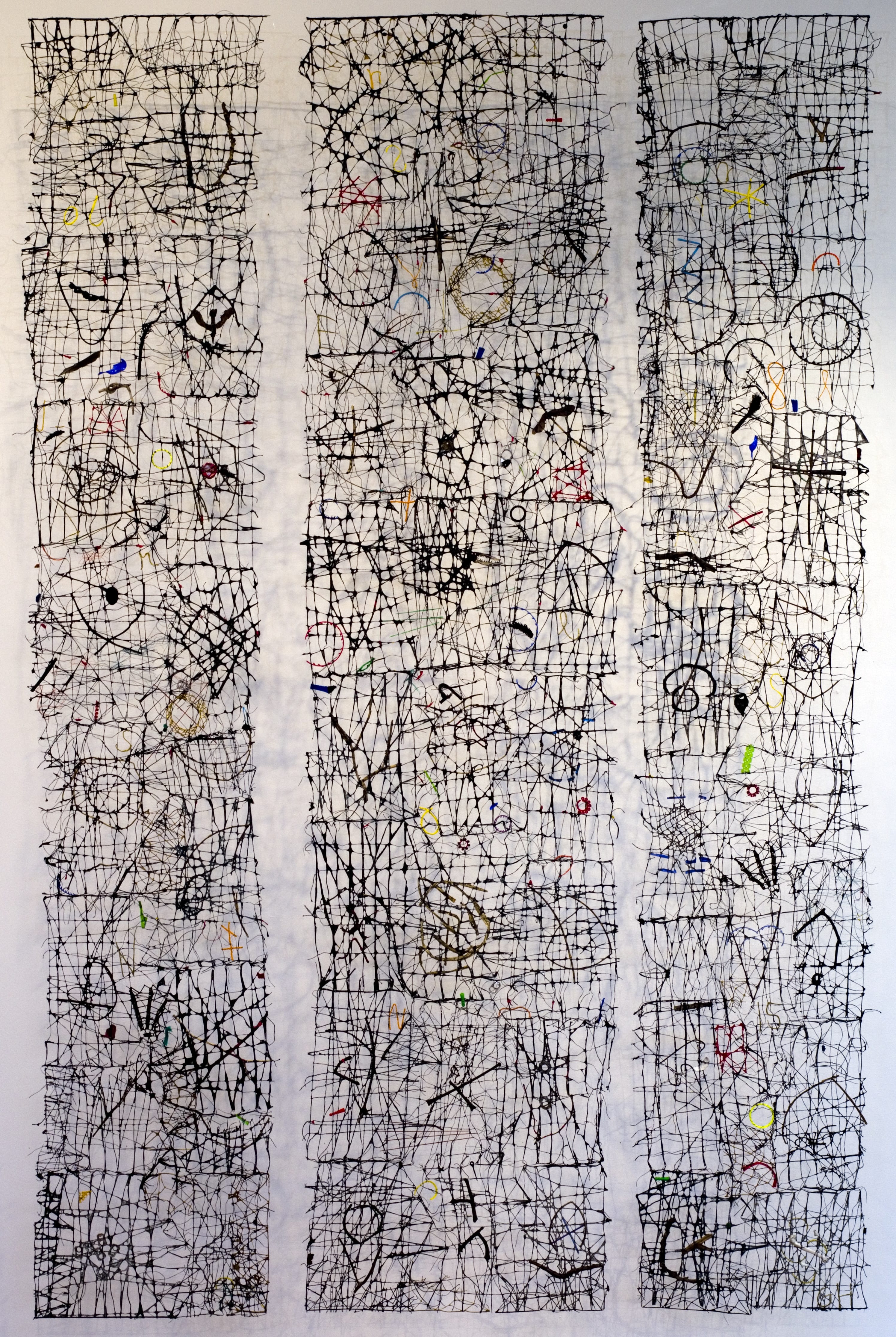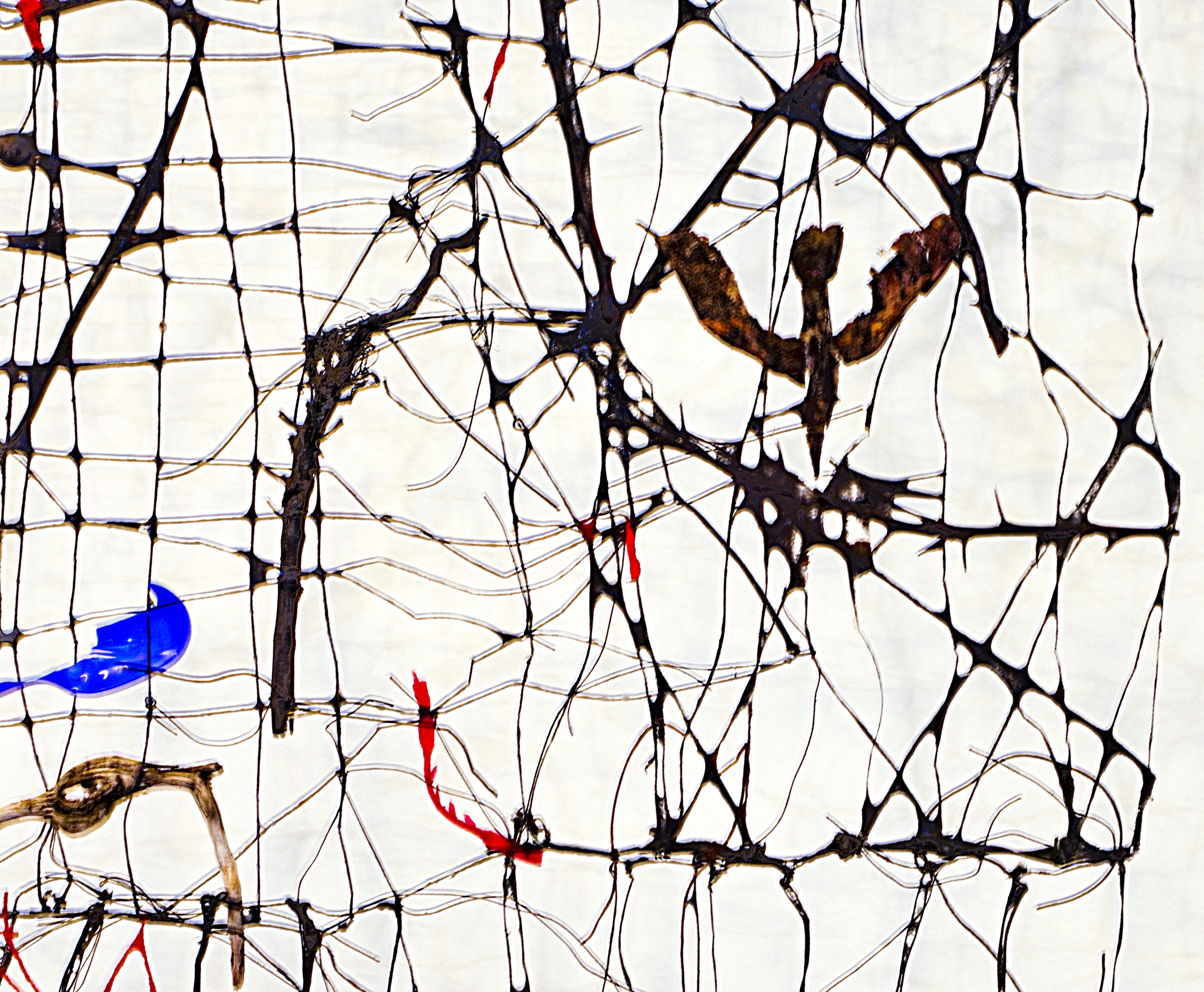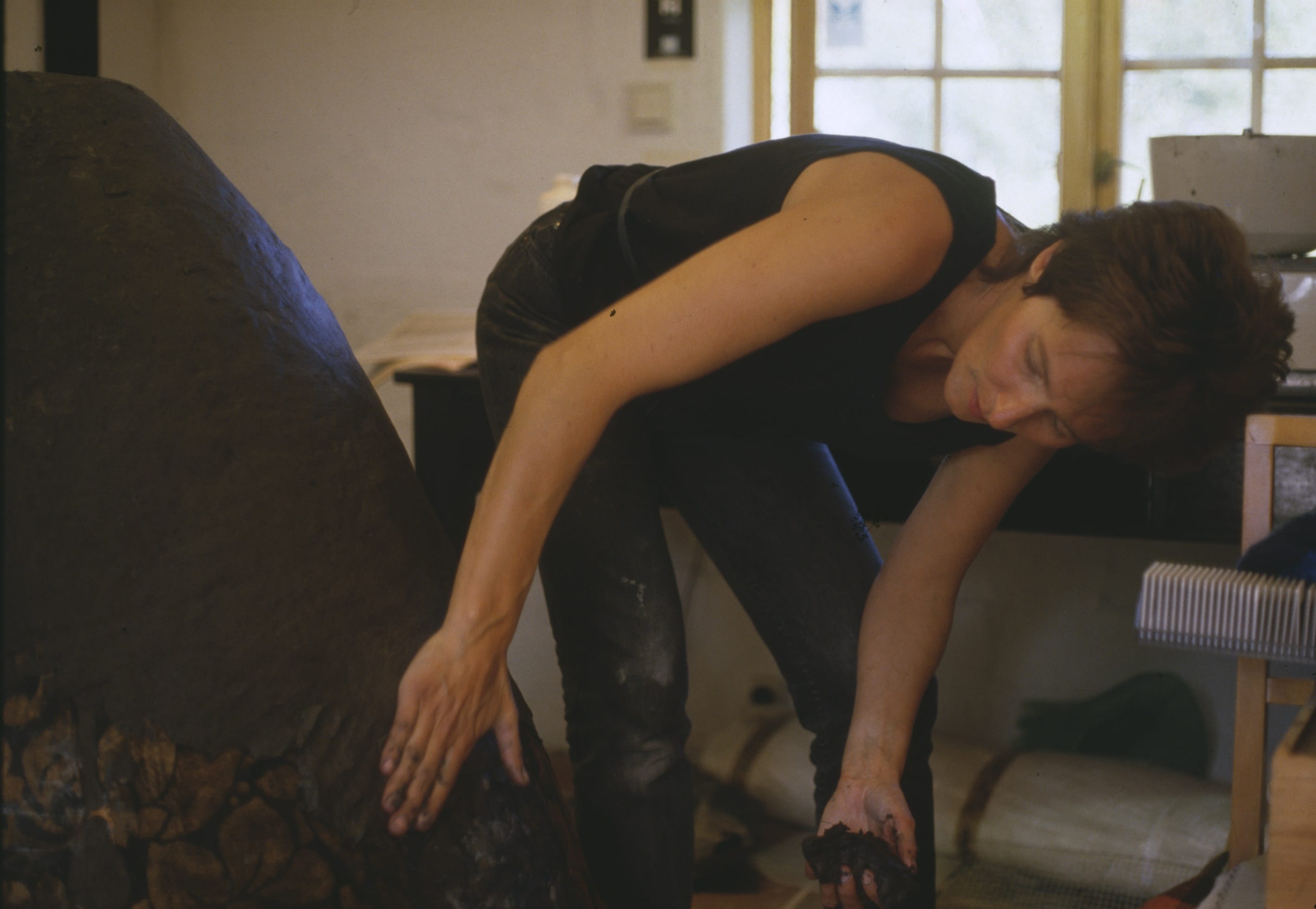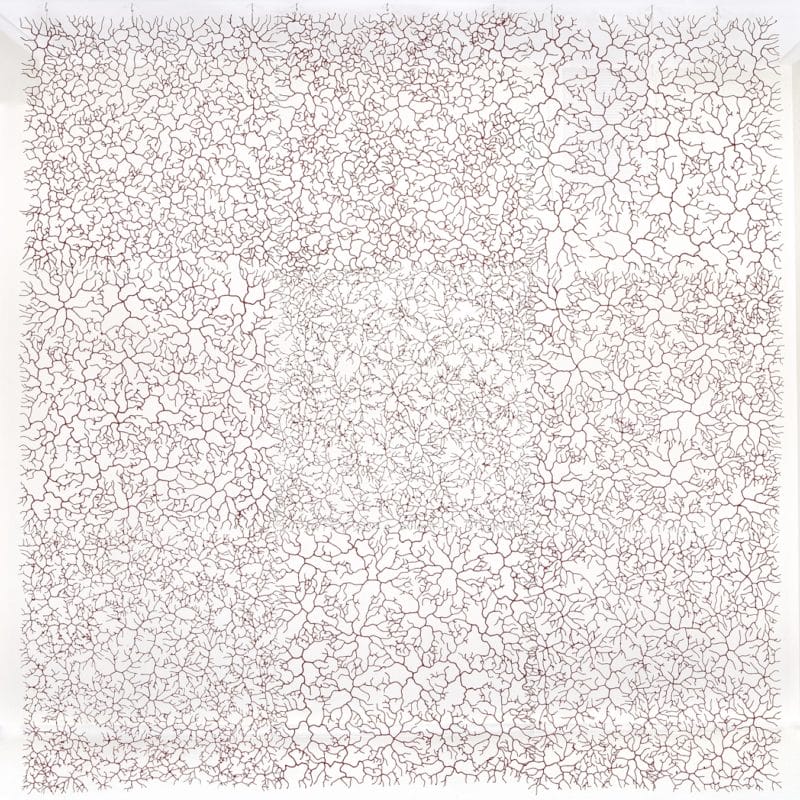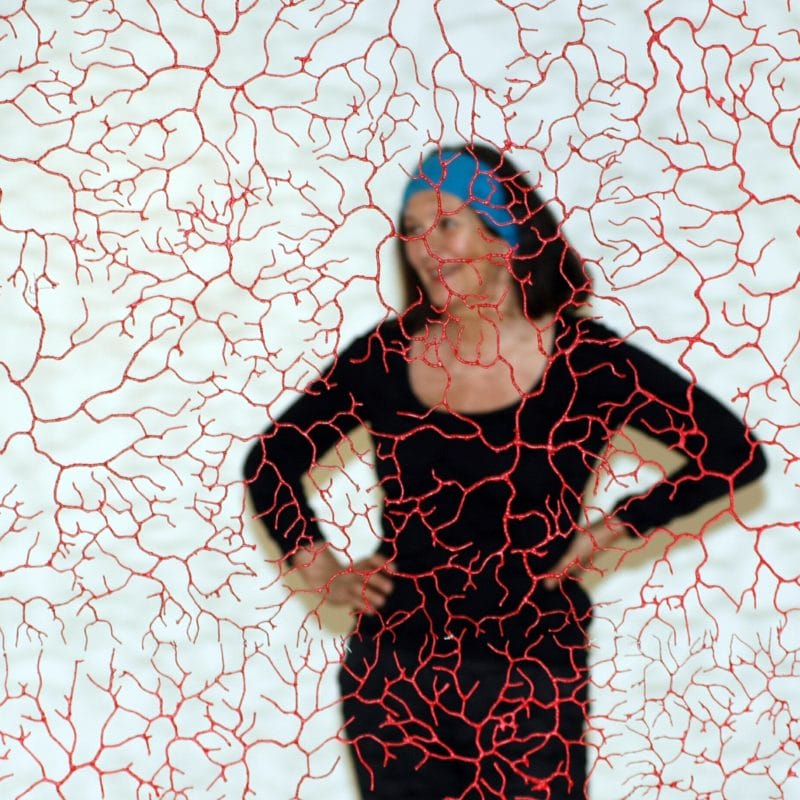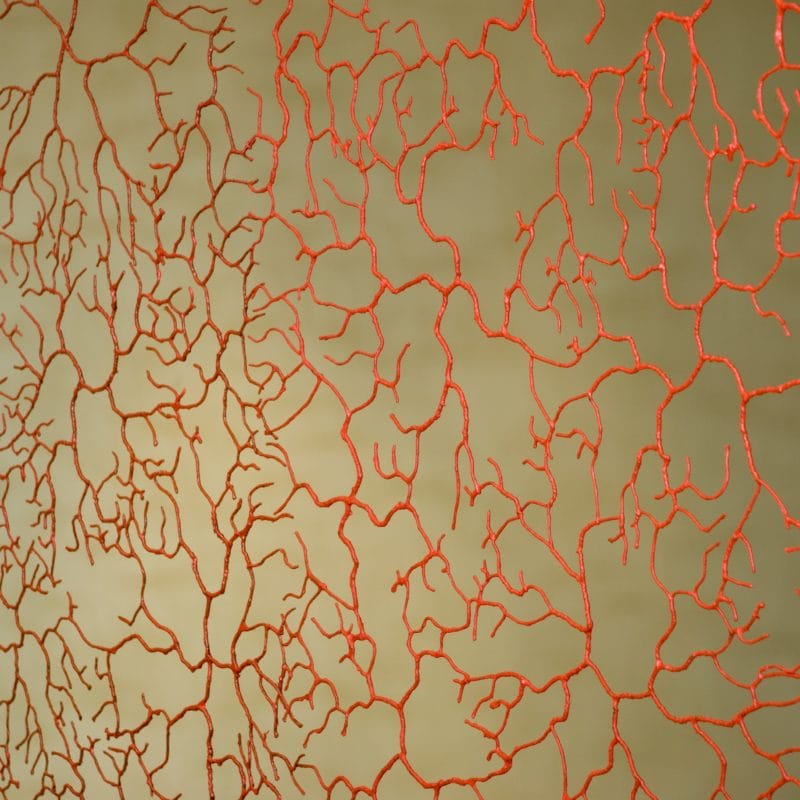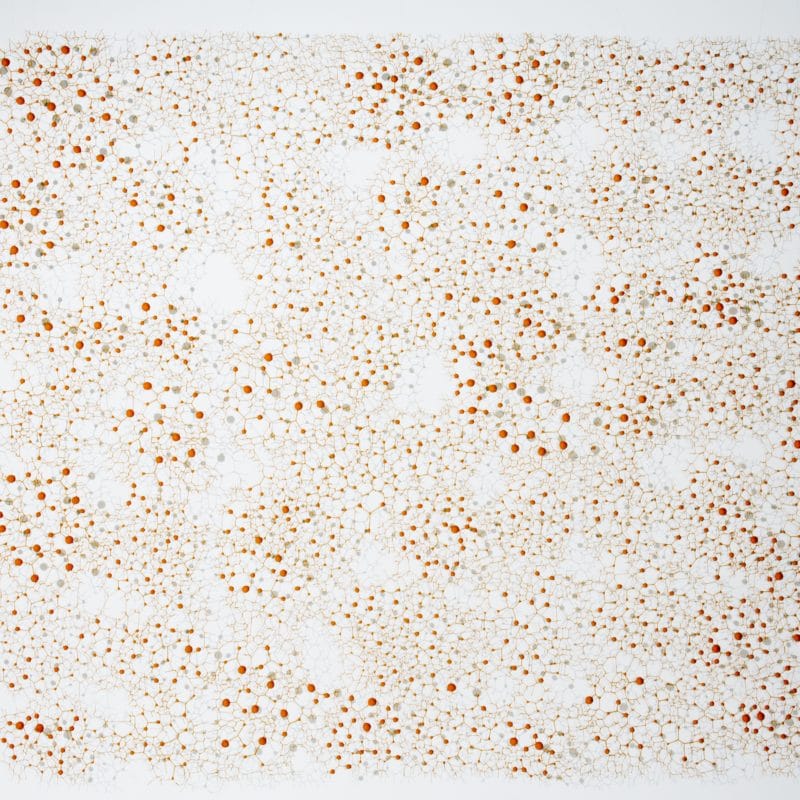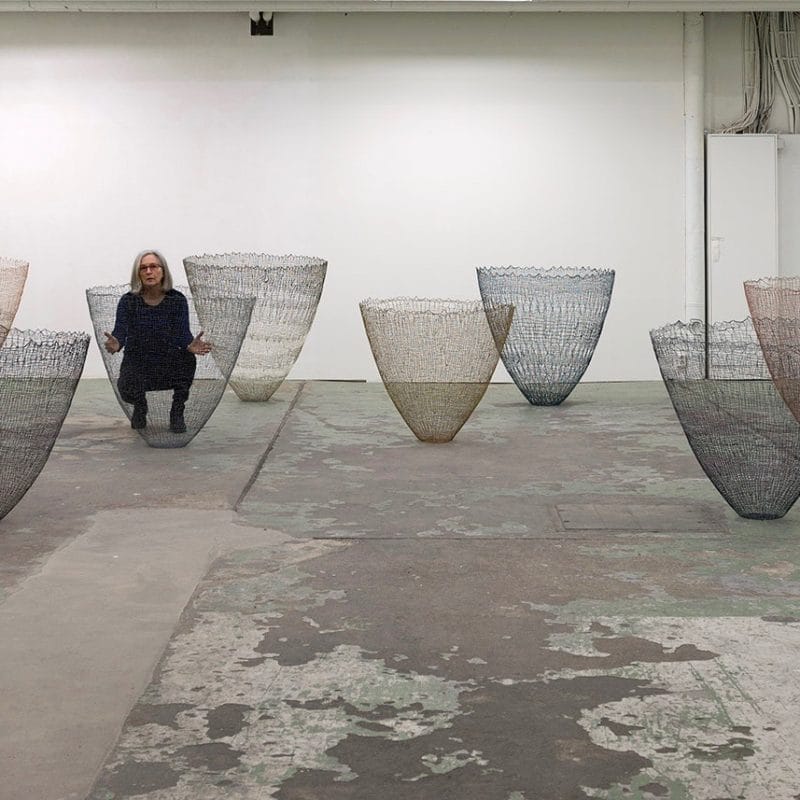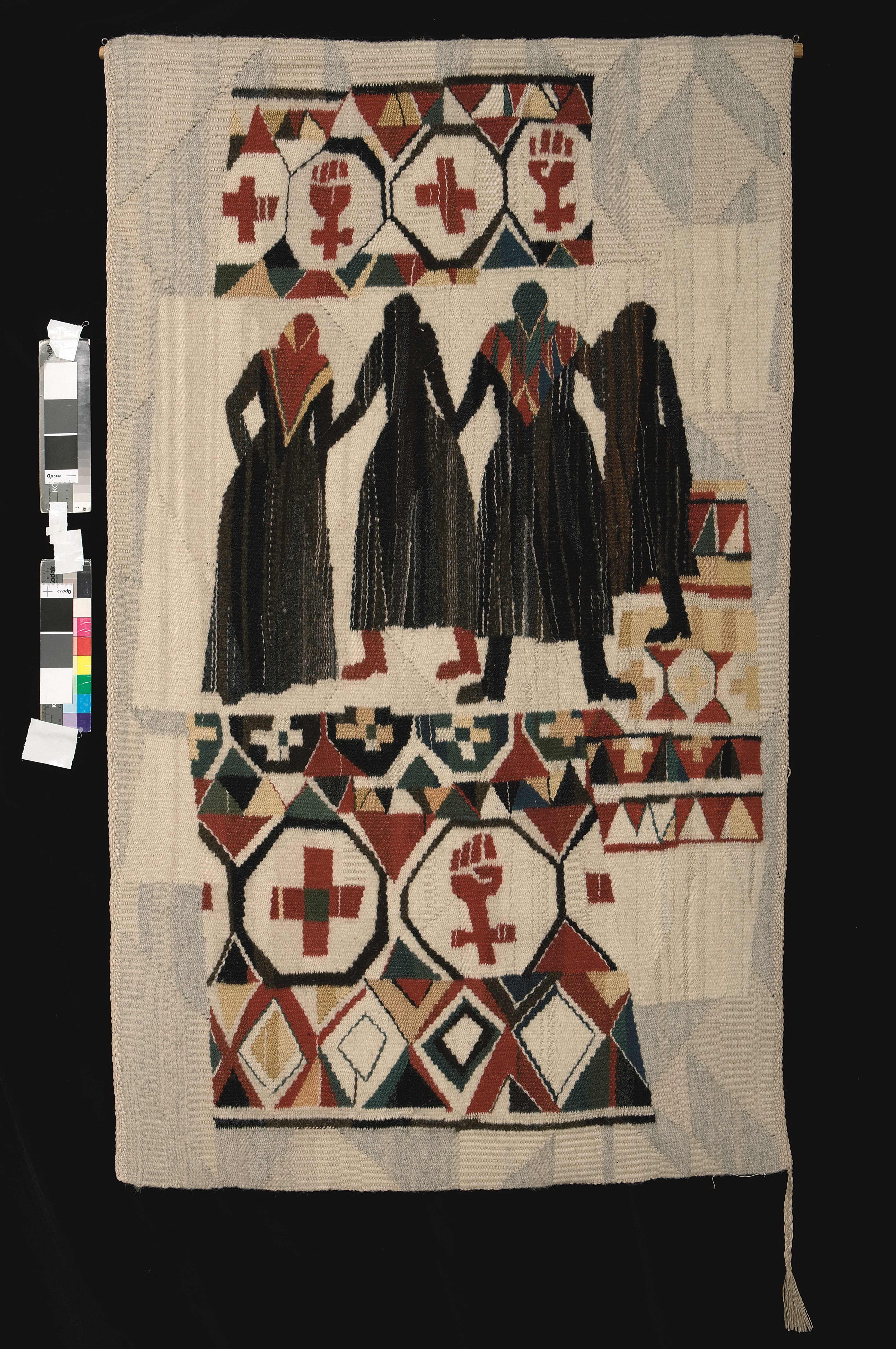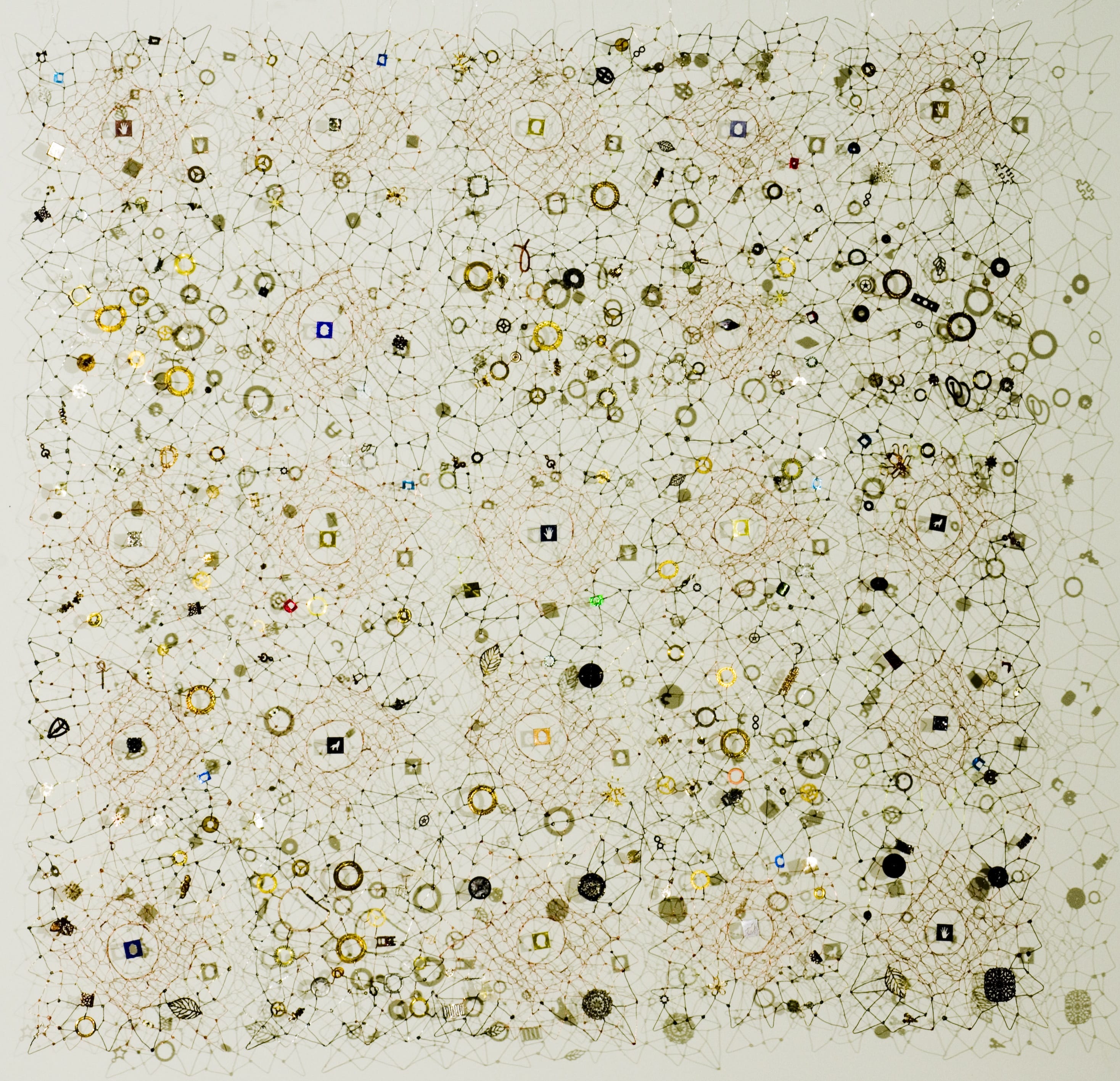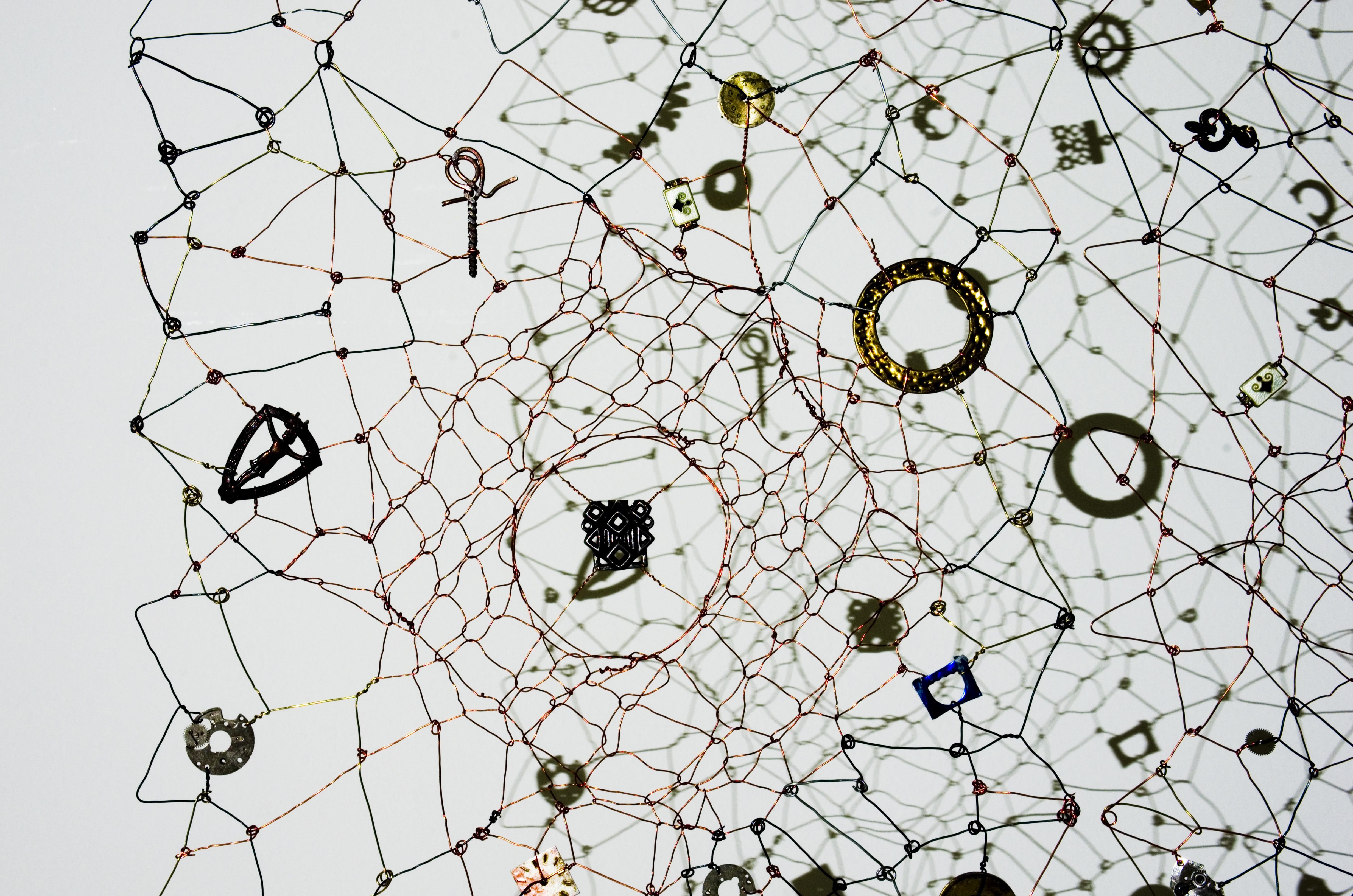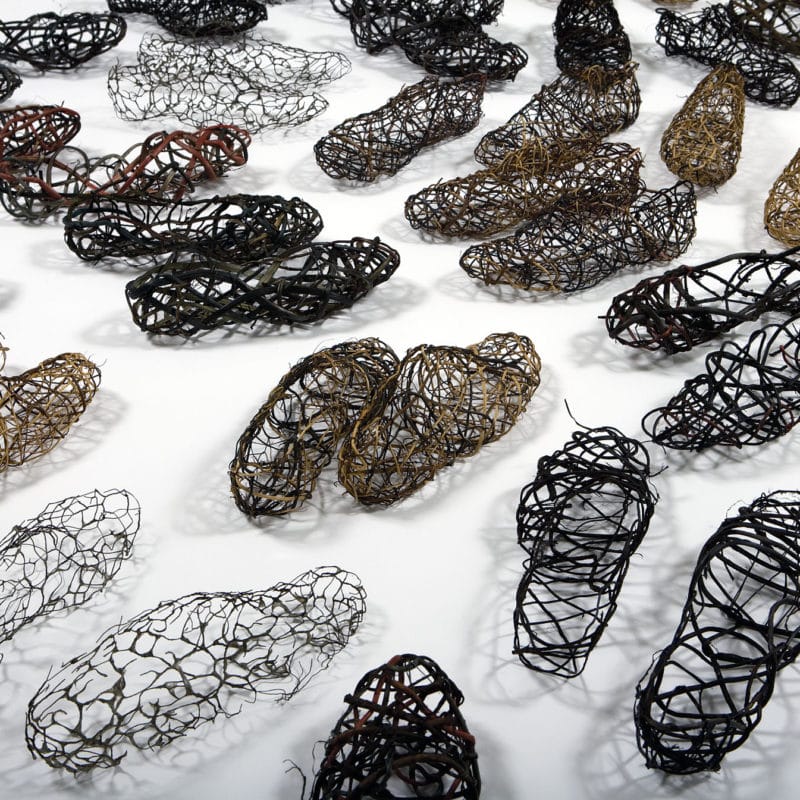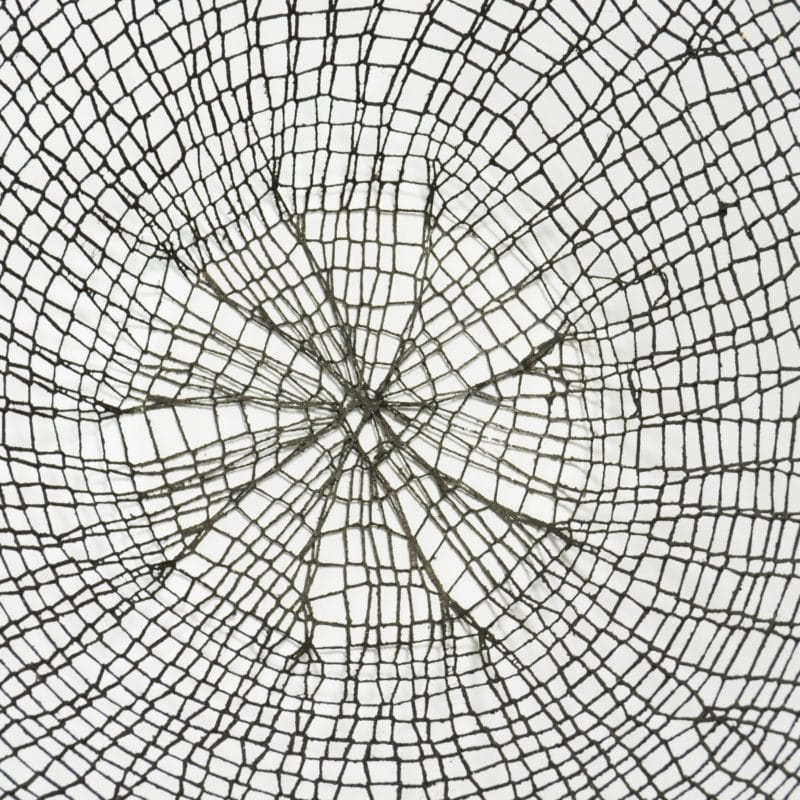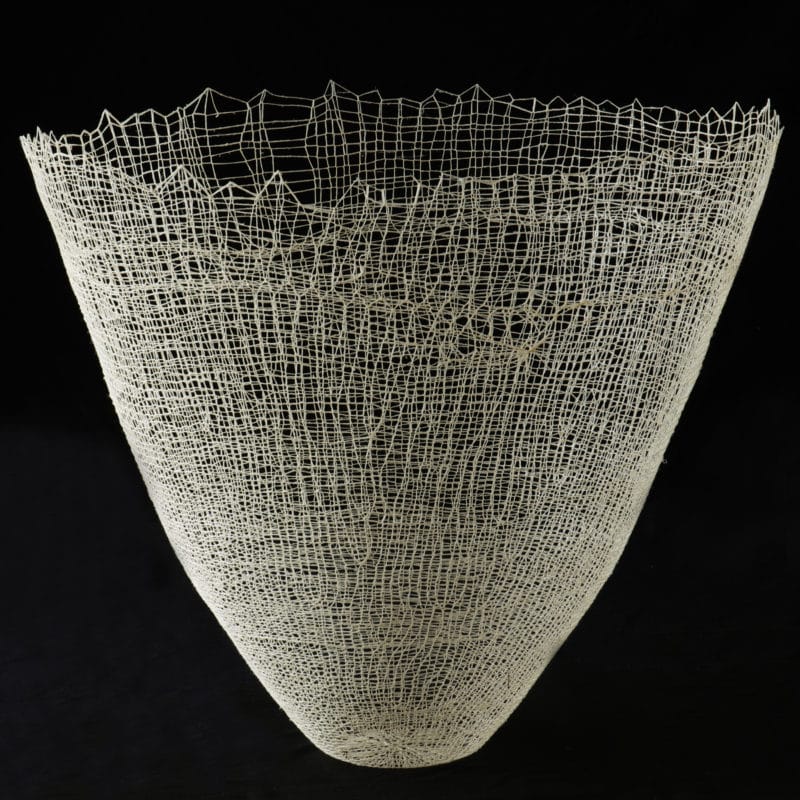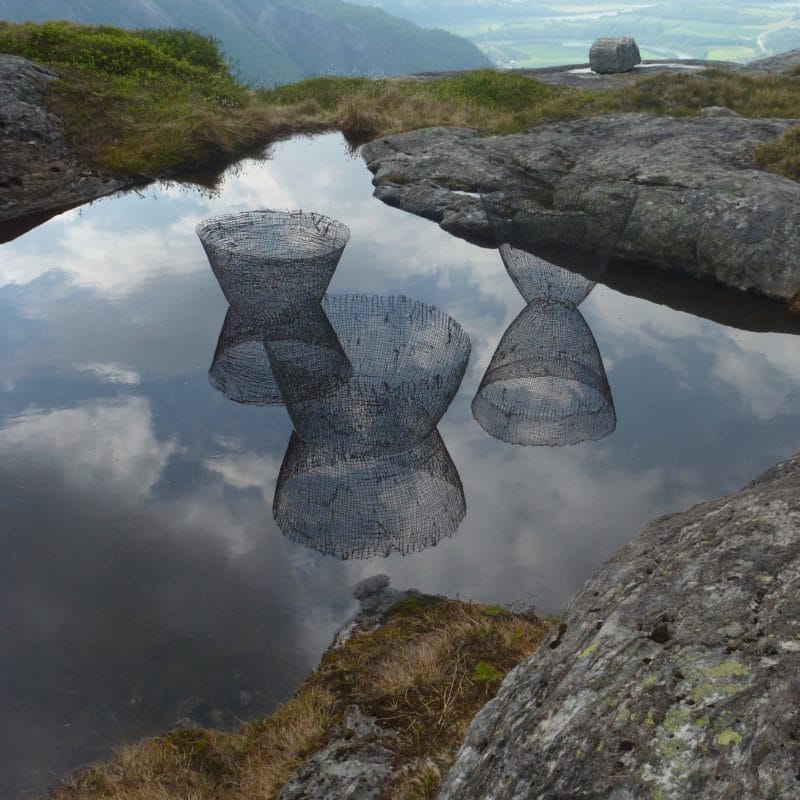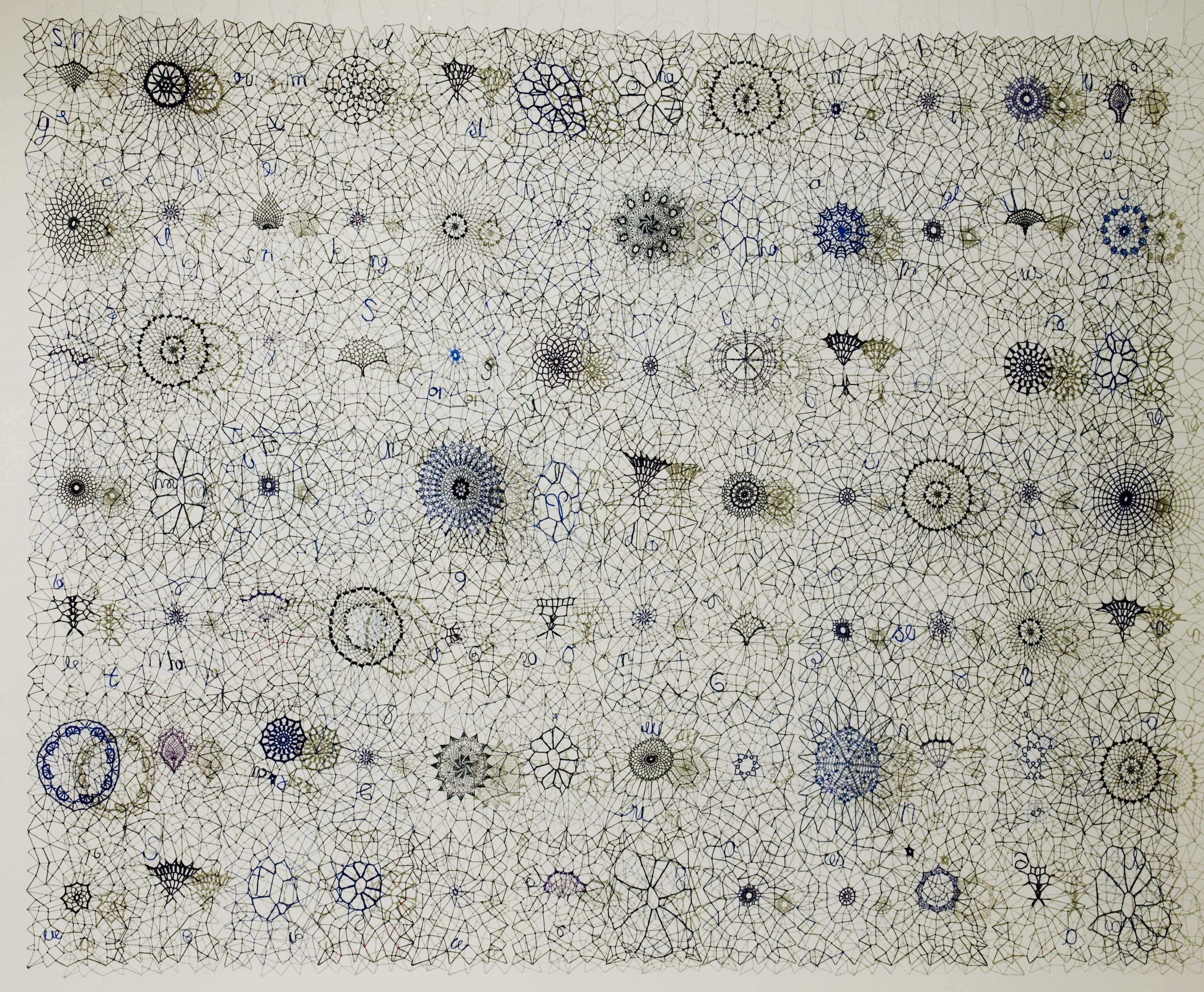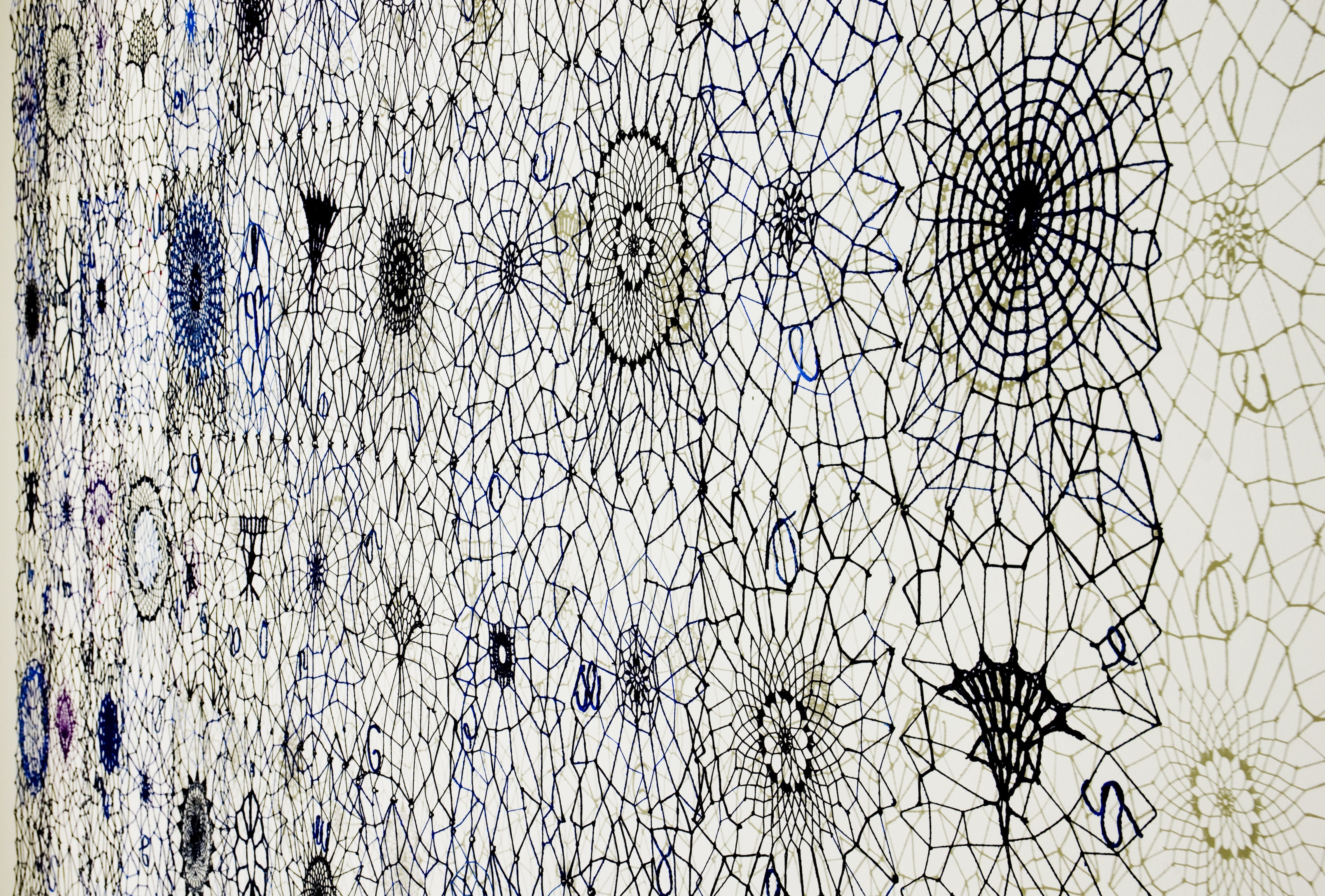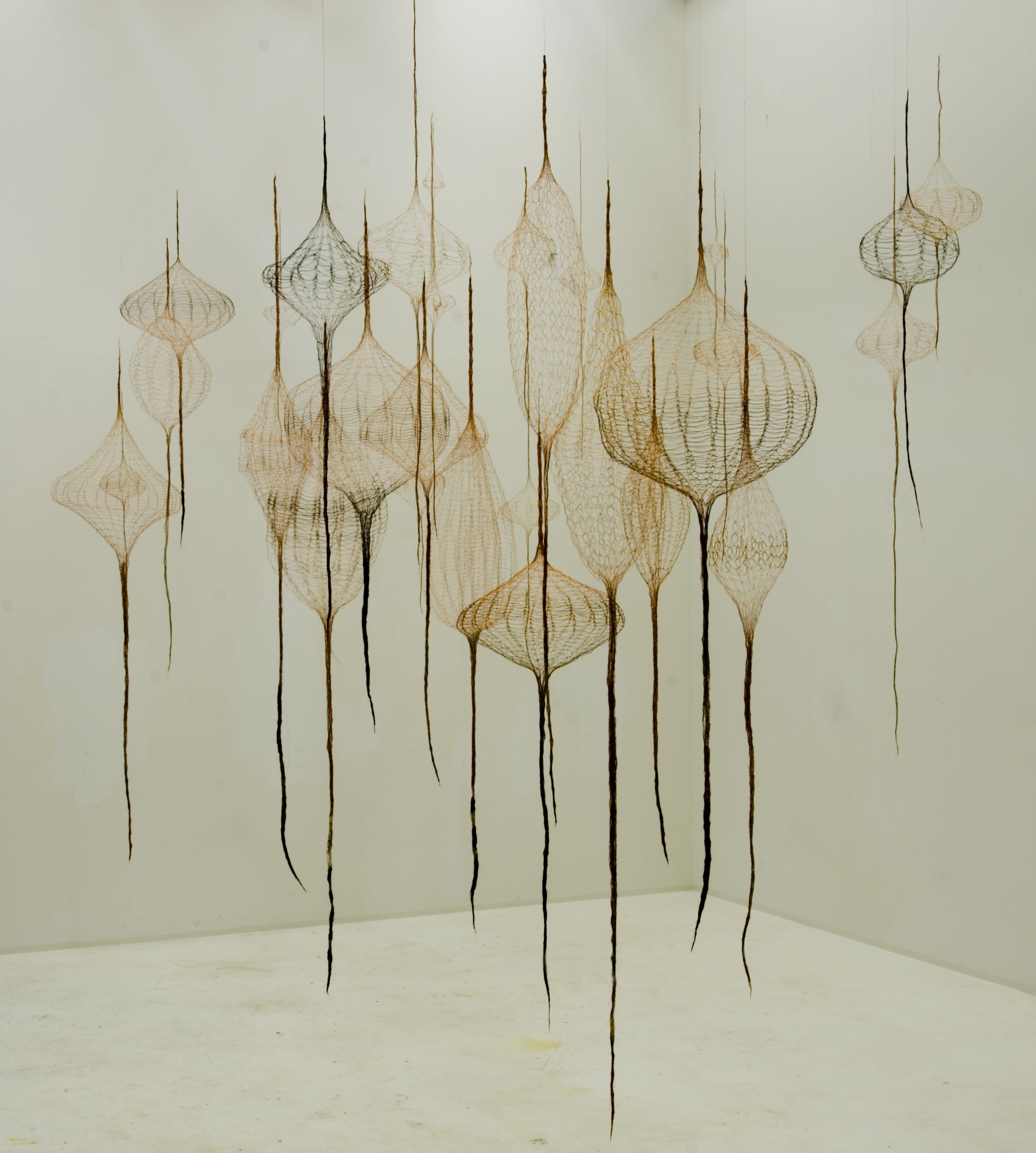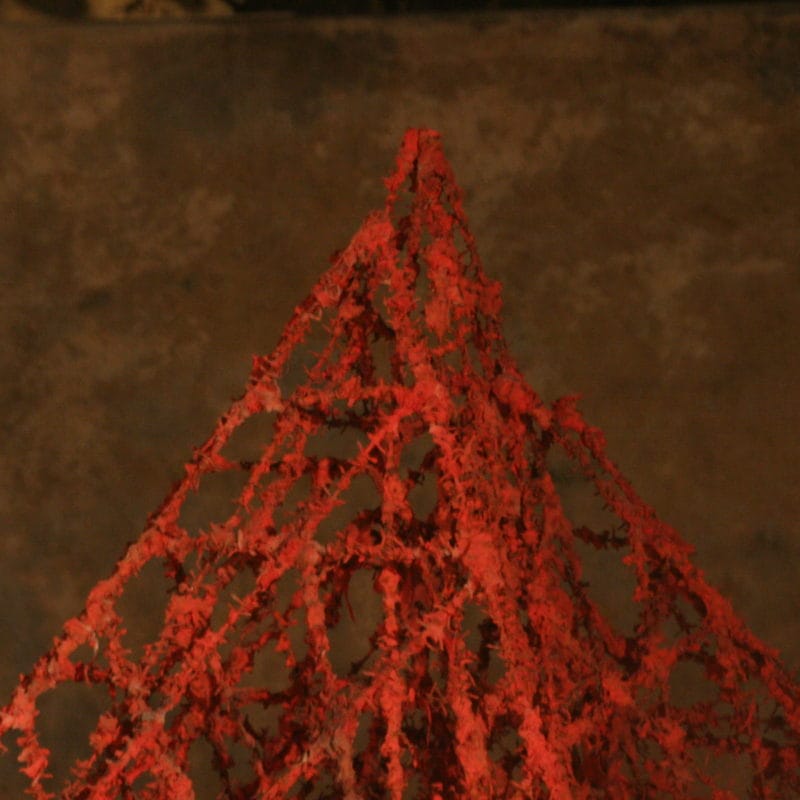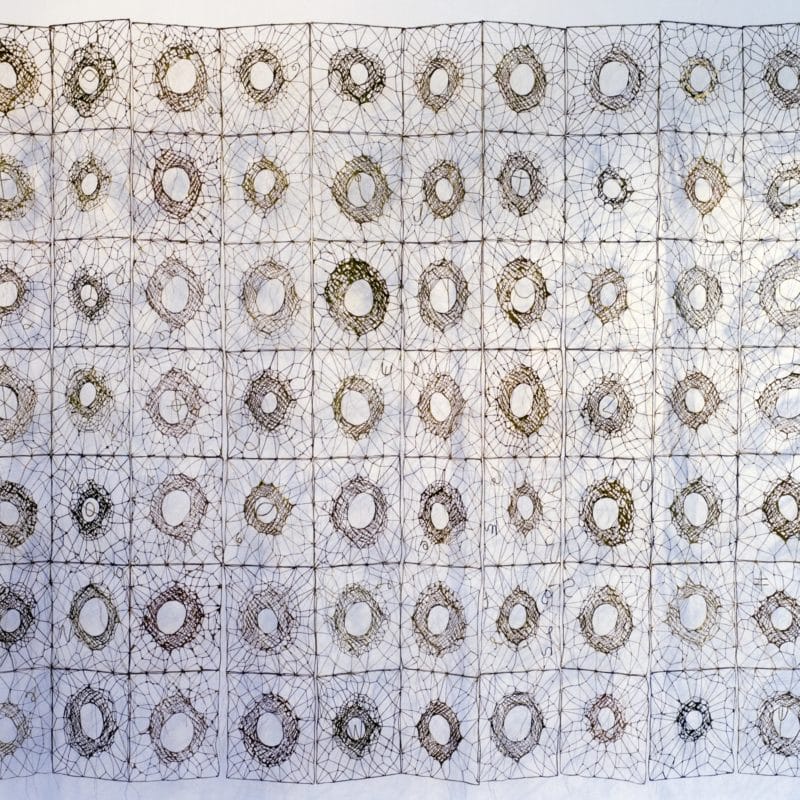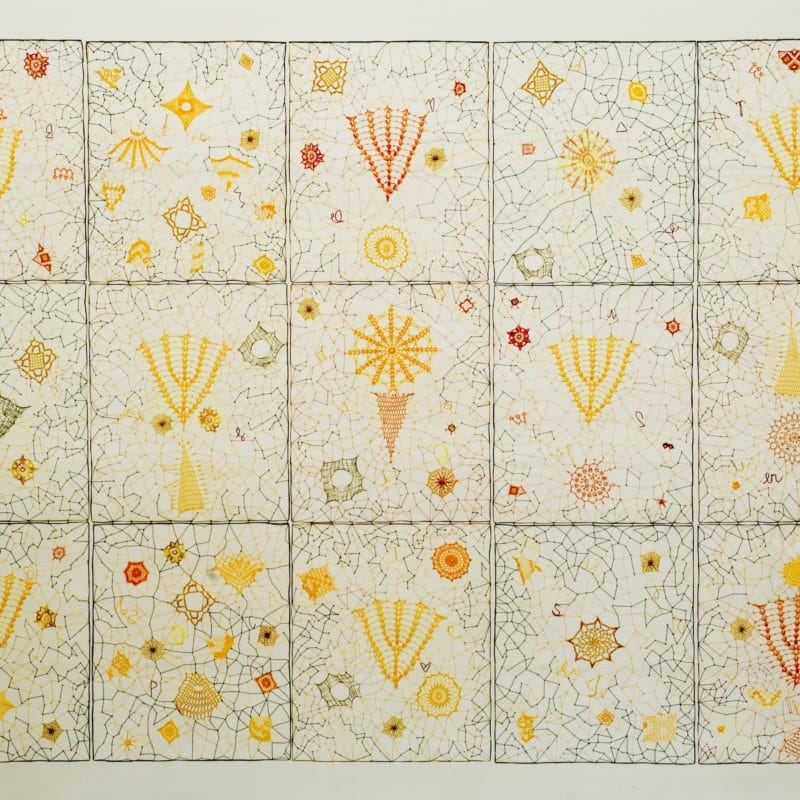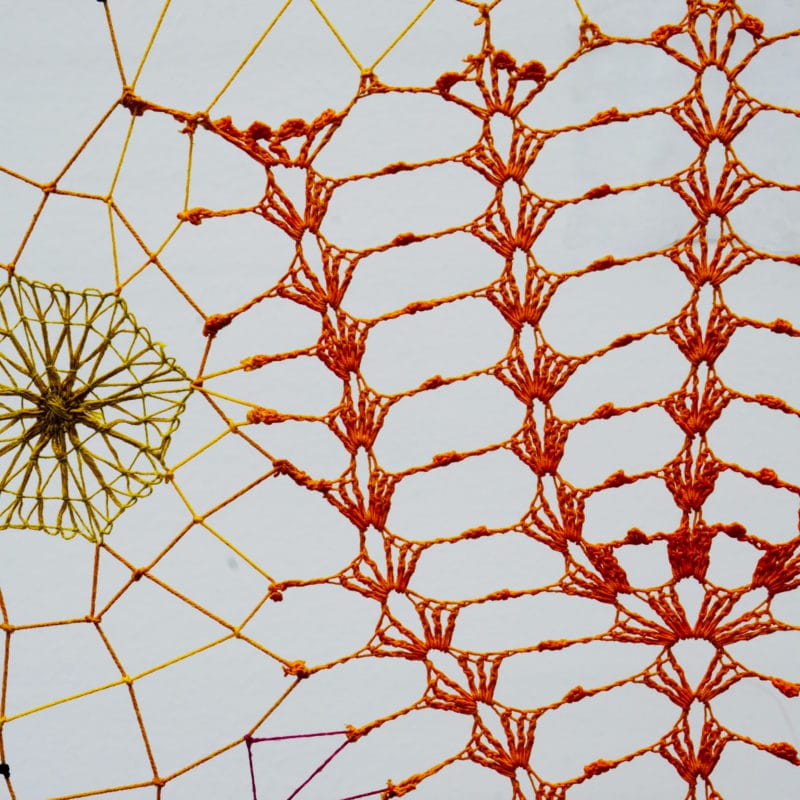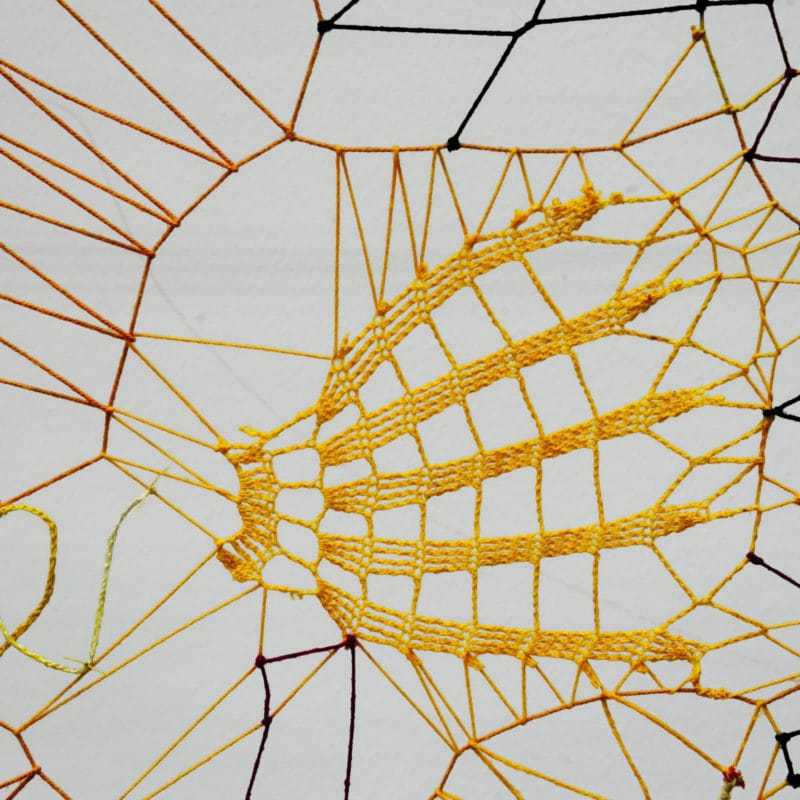Interview with Gjertrud Hals
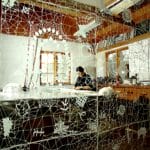
Gjertrud Hals is a well-known and esteemed Norwegian textile artist who began as a weaver of tapestries and then, driven by the need to experiment, specialized in the creation of two-dimensional textile panels, sculptural works of fiber art in which she uses cotton pulp, paper, a wise interweaving of threads of various kinds with the intrusion of unusual materials such as copper wire.
Her Lava series, which dates back to 1987 and is absolutely innovative in the international panorama of the textile art of the time, has earned her important awards and recognitions and marks the turning point of her artistic career.
Gjertrud Hals’ large knitted sculptures, only apparently light and fragile, show the close relationship between the three emotional components of our aesthetic perception: light, a living and impalpable material that conveys emotions and moods, shadow that transforms and hides, and form, which gives body and substance to the idea.
Here is the link to the artist’s website
Can you tell us something about yourself and your history as an artist? How did you start? How did your passion for textile art come about?
Ever since I was a little girl I enjoyed playing with whatever I could find.
In my generation,girls were expected to weave, knit, crochet and other basic craft techniques as a part of our daily life, and we were supposed to start making our own clothes from about the age of twelve. But my mother often complained, and she used to say: What is to become of you? You are just playing!
And she was right: when she died a few years ago and I had to go through her belongings, I found items I had been making as a child and teenager: drawings, prints, paintings, tapestries, embroideries, jewelry and «mixed media».
However, most of the time I was playing with things outdoors: collecting shells and insects, making nets and other equipment to catch small fish and crabs and keep them in ponds.
Later, as a teenager, I was very eager to get an education. I did not want, as many girls in my area, to end up as a worker in the confection industry.
So, by the age of 22 I was already educated a teacher, and got a job in a school. But I did not feel content, and realized that I had to go on and try to become what I really wanted to be; an artist.
The 70s, with green activism, feminism and women’s culture brought me to textiles. After one year studying drawing, I trained in tapestry weaving for two years. During that period, in 1976, there was a major exhibition of Magdalena Abakanowicz´s art in Oslo. I became utterly fascinated and sure that textile/fiber also could be my way!
Quote: “I was born and raised on a small island on the north- western coast of
Norway and this has to a large extent influenced my artwork.” Can you talk to us about it?
I was born in Finnøy on the Romsdal coast in 1948, and lived on the island until I was twelve.
My family then moved to Molde, a small city in the Romsdal fjord.
When I grew up every winterfishery for herring was common practice. The herrings came along the coast to spawn, and were followed by seals, birds and whales.
Fishermen took their boats out in to the open seas, located a shoal of herrings, threw out large nets and hauled up the catch.
At the same time others were hunting the whales; whale vessels looked quite small compared to the enormous creatures they brought to land.
We lived in the middle of these events: from our kitchen window we could see the boat lanterns in the winter night, like if there was a big city out in the ocean.
At other times we could watch how they were filleting whales and converting oil from the fat.
My father, as well as my grandfather, were mechanics; they made and installed engines for the fishing boats. We were living close to the factory, and could watch how the men were working, for example how they cast bronze and iron.
My mother, like most women, cared for the house and mde many things that we needed, like clothes, rugs etc.
As I grew up I could see that my childhood gave me a lot «to work with»: stories about shipwrecks and other disasters, dramatic incidents that we witnessed, the wildlife around us, winter storms, wonderful sunsets, the ever changing and challenging ocean..
What are your sources of inspiration? How do you choose the subjects of your works? Are there any artists or artistic currents that inspire you?
Magdalena Abakanowicz is still important to me, and last winter I went to Lodz in Poland, just to see a retrospective exhibition of her art.
When I was young I highly admired Constantin Brancusi. His basing his art on the folk art and crafting tradition of his culture, gave his art a modern, personal twist.
I am also fond of artists like GEGO ( Gertrude Goldsmith), Ruth Asawa, and Harry Bertoia, all with abstract 3D expressions and in their artistic peak in the 50s and 60s.
As to contemporary artists I am inspired by many of them, just to mention some, Mona Hatoum, El Anatsui, Ghana Amer and Tomas Saraceno.
Mythology is a never-ending source of inspiration, and relating to history and mythology is for me a way to deal with what is happening in todays’ world. Like life, the mythological symbols are complex, profound and interesting, not immediately easy to catch or understand.
However, more than anything else I am inspired by my own memories and experiences, and at my age I have plenty to choose from.
To make art is for me a way to express myself in the world, and to make sense of order and chaos. I feel lucky to have this inner space of unsorted thoughts and feelings, where I can play and «write my visual poems».
Let’s talk about Lava: a work in series consisting of large sculpture vases made of cotton and flax fibers. A very suggestive work in which the textile artwork is freed from its natural and usual two-dimensional structure. What does Lava represent in your career and in your personal growth as an artist? What is the meaning of the shell, a recurring symbol in your art?
Lava was a great breakthrough for me, both artistically and personally. I had been planning these shapes and testing the material for a long time. The shapes should be archaic and timeless, and I wanted them to be huge, vulnerable and strong at the same time.
I got some cotton and flax pulp from a paper mill, and started testing out the casting process. After many failures, I suddenly succeeded, and it was overwhelming, like giving birth!
I produced them in a year, between 30 and 40 of them, and I felt sure that I was making something unique.
When I started exhibiting Lava, they soon resulted in two international prizes and a lot of attention, in fact, too much for me! I got the feeling that «everyone»wanted the Lava pots, and I became worried that this adventure could stop my artistic development. Consequently I chose to stop making them, and went on in other directions.
The shell is a link to my childhood, as I was a passionate collector. I fancied the ones that were so thin that they let the light through. My grandparents had a lamp made of translucent shells from the Far East. I could not get enough of it!
I often choose symbols that encompass several meanings. For me the shell represents the protective membrane between life and death. Using this symbol is a way of expressing our vulnerable lives and civilization. We are building houses, cities and nations, but underneath the civilizations untamed forces of nature are roaring.
On the other hand, to quote myself (1987): «A cleavage of the membrane at the right moment may signify life liberating itself or an idea or thought breaking forth and materializing itself in creativity»
Is there a group among your works or a particular artwork that represents you more, and to which you feel particularly attached?
One of the most significant works for me is the net sculpture Insula, that I made in 2006/2008. I was living in Oslo at the time, and for a long period I had no studio, so I was working from home. My husband is a psychologist, and his books and articles about neuro psychology were all over the place. Looking at them, I got the idea to make an image of the human nervous system, abstracted into a square.
Insula is the Latin word for island, and it also refers to Insular Cortex, a central structure deep inside the brain. It is believed to be involved with consciousness and plays a role in diverse functions usually linked to emotions and perception of ourselves as isolated creatures, and to our consciousness of the «self».
At the same time Insula is also referring to «the island» and has a resemblance to coral reefs, another of my favorite themes.
I made it with metal wire into 100 X 100 cm squares, 9 in total. I then rented a place where I sprayed the grid structures with dyed, liquified paper pulp, about 50 layers of it.
For me it was a groundbreaking method, that I have been using several timessince, recently in Tela, 2018 and Vena Cuprum, 2018.
Among the many artworks you’ve made over the years, is there one in which you no longer recognize yourself and that you feel far from your current artistic style?
I started my artistic life as a tapestry weaver. One of my first tapestries, «Women’s tapestry» from 1977 I can see is quite far from my current artistic style, and that use of feminist symbols is far from what I have been doing later.
On the other hand, I can recognize myself in the way I have mixed past and present and played with the symbols: The motive is from a photo of my grandmother and her friends going to church. I have put the figures into a traditional tapestryand replaced parts of the pattern with feminist symbols. Actually, it is so typical me that I can do nothing but accept it, even though it looks different today
“Women`s Tapestry”, 1977, photo Nanna Wessel, copyright Gjertrud Hals
You often use recycled materials in your works. What is the reason for this choice?
I like to think that when found/recycled material is removed from its context, some of its original spirit remains. There is a process, labor and history in the materials I use that inspire me and give meaning.
For the moment I am using copper wire that I find in the local recycling place for metal. I like to go to that dirty, gloomy place that reminds me a lot of the factory my father worked in. I pick the shiny, reddish wire from the electric cables and the dark colored one from dynamos and motors.
It makes me think of the copper material itself, being the first metal manipulated by humans. All the striving, and labor that has been done, and technology that has been developed to produce this material, fills me with awe and a strong feeling of being a part of it all.
I am also using everyday material like buttons and the ring-pull tabs from beverage cans, by integrating them into my nets. Elevating the status of these man-made objects from worthless to worthwhile gives me comfort and joy.
Thanks to the use of threads and transparencies, your large sculptures actually assume an aspect of extreme lightness, which contrasts with the idea that the sculpture is an expression of solidity and massive grandeur.
Thinking about your artwork Ultima: what is the relationship between the lightness expressed through knitting and the monumentality of dimensions? And more generally, what is the role of empty spaces, of negative spaces in your works?
I have always been interested in different materials and technology. Much of my time I spend testing out materials and techniques: for example how wide, how high, how thin is it possible to build before it collapses? On the other hand, I have also made compact fiber objects in inner molds to see how the material shrinks in the drying process.
When I started the Ultima process, the urn shape had rested for close to thirty years. Meanwhile I had been trying out resin, and little by little the knitted urns grew in my imagination. Would it be possible to make them as voluminous as the Lava urns, with the translucent technique of knitting, combined with resin?
The empty spaces, «the nothing between the lines» (GEGO) plays an important role in my artwork. I like my artwork to be open and to breath. I am working with the connection between form, light and shadow. When I am creating sculptural volumes, I prefer to use materials that look fragile, but are actually physically strong. In that way it is possible to render the negative space as important as the positive one.
How do you plan a new work? Do you follow a scrupulous design activity or do you let your instinct orient you?
I use a lot of my time testing out techniques, materials and expressions. I have, over the years, gathered a big collection of samples. In that process I am playing, laying no pressure on myself, just letting my instincts lead me. Sometimes I get lucky and astonish myself by creating something I have not seen before, and that moves me in some way.
When it comes to the final products, it is often a result of ideas that have been growing in my mind for a long time. Eventually, I go through my samples, to see if there are techniques/materials I can use to deliberate the idea. Or I go back to a «roundabout» where I have been earlier, and might go in a totally different direction than I expected.
I like to work on several(from three to five) parallel projects. I often start off with an idea, work on it for a while, but I am not satisfied. So I put it aside and work on another piece, until the I find the solution, or maybe not.I have artworks that have been resting for years before I finish them.
What do you think is the most important difference between a craftsman who works with threads and fabrics and a textile artist? When does a textile work become art?
In the art world of today that is a difficult question to answer: an ordinary piece of fabric can be a piece of art when it is shown in a gallery or museum, and for ex. a bedcover can be part of an installation. There is an artist (Sarah crowEST) who makes aprons for utilitarian use. The same aprons she exhibits as canvases on the wall, or uses them as part of art performances.
Consequently, it is a question of context, but also of the concept of the crafter/artist. Although a strict classification is impossible, the «trained eye» can often easilyrecognize the difference between a piece of craft and a textile artwork. However, there can be very small differences: a slight modification/intervention can be enough to make the ordinary extraordinary!
What are you working on right now? Do you want to tell us about your current textile projects and current or future exhibitions?
I am currently working with copper wire: knitting big 3D nets and also several wall based nets in different metal materials.
Besides that I have started working with Japanese kozo fibers(bark from mulberry trees) again. I did a lot of that in the 90`s, so it feels like it is time to do it again, hopefully with a new perspective.
I am now working towards a solo exhibition in Galerie Maria Wettergren in Paris, fromFebruary 6th toApril 25th 2020.
